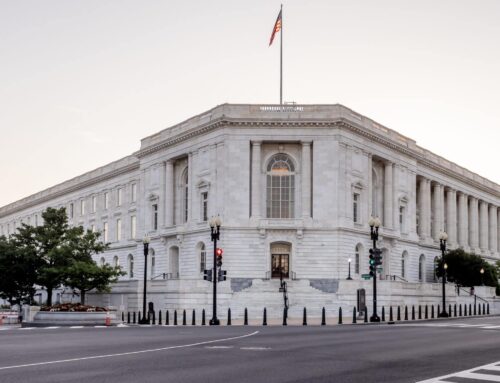I’ve written many times in this space about the many reasons that building a wall along the southern border makes no fiscal sense at all.
Even before President Donald Trump started talking about a wall during his campaign, it was clear that wall construction was in no way a cost-effective or wise way to address the issue of illegal immigration. That is still true, yet the president’s proposed wall on the southern border is once again casting a shadow over federal budget negotiations – and is likely to do so throughout this calendar year.
Now that the Department of Homeland Security has solicited proposals for the design and construction of the wall, the debate is over whether initial funding should be provided in the current fiscal year, 2017. Until just this week, Trump was insisting significant funding for the wall be included in the continuing resolution bill that will come before Congress this week to avoid a government shutdown on Trump’s 100th day in office. In part to avoid that shutdown, Trump has now said that the fight over border wall spending can wait for the fiscal year 2018 bills, which will go through hearings and votes this summer and likely lead to yet another continuing resolution in the fall.
No matter the timing, the idea of a border wall being effective and affordable is a pipe dream. The only thing arguably more expensive than trying to build a wall that is 2000 miles long is trying to use technology to sketch a virtual wall that far. Remember SBInet? It failed for a reason in 2011. Six years later, it wouldn’t be any cheaper or smarter to revisit that bad plan. Unfortunately, at a recent Senate hearing, the secretary of Homeland Security seemed to reopen the door to that very idea. And the face-saving compromise for the continuing resolutions that will get us through the remainder of fiscal year 2017 is adding more technology.
If Secretary John Kelly is willing to go back that far in a search for ideas, he may also revisit an old Customs and Border Protection “wish list” that would add at least $12 billion to the federal deficit. After all, everything old is new again.
All of these machinations on how to “secure the border” miss the basic point: A large portion of undocumented immigrants are people who arrive in the United States legally and then don’t leave when their visas expire. No wall, no matter how high, will solve that problem. And neither will high-tech sensors, no matter how capable.
It is good news that Trump appears willing to allow a fiscal year 2017 omnibus appropriation to fund the federal government to proceed without any accommodation for wall funding. But the last 97 days have taught me that, even more than with most presidents, this one can change his mind and turn policy on a dime – or in the case of his original request, 15 billion dimes.










